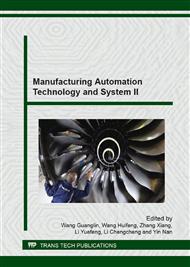p.337
p.346
p.351
p.357
p.365
p.372
p.378
p.385
p.392
Marine Gear Reducer Design Device of Lubricating Oil Temperature Control System
Abstract:
Signal of PLC controller by PID operation after the output of numerical simulation between 0~1, and solid state relay can receive only signal, digital or switched on or off. Only connected the two, temperature control system can be realized. The experimental approach is to learn from PWM pulse width modulation technology, the numerical analog PID controller output into the heating time in a cycle, namely, solid state relay on time. By this method, the indirect control heating rod of equivalent power, the power output of the heating rod according to the control signal of controller output, so as to realize marine gear oil temperature PID regulation. This paper designs the control system used in the experiment. The temperature control experiment system; design of the electrical schematic diagram of the temperature control system, including two parts electrical schematic diagram of control circuit and main circuit of temperature control system design process. At the same time, the experimental scheme is designed. Analysis of the mechanism of temperature balance control object, and focus on the temperature within the experimental results are analyzed.
Info:
Periodical:
Pages:
365-371
Citation:
Online since:
August 2014
Authors:
Keywords:
Price:
Сopyright:
© 2014 Trans Tech Publications Ltd. All Rights Reserved
Share:
Citation:


